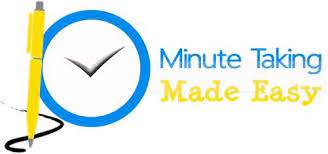Meetings are the number-one time waster in the workplace, according to a study by Verizon Business. They say that the average executive spends approximately 50 per cent of their time in meetings. The average middle manager spends about 35 per cent of their time in meetings.
As administrative professionals, we spend far too much time in our own meetings and the meetings of our executives.
When conducted effectively, meetings can inspire and ignite motivation, lead to higher performing teams and a stronger bottom line. However, more than $37 billion is wasted each year in unproductive meetings—and that’s in the United States, alone. Admins need to minimize the wasted time in meetings and maximize the productive time.
Once you’re aware of my Seven Deadly Sins of Meetings, you’ll be able to better plan, organize, participate in and facilitate great meetings.
Seven Deadly Sins of Meetings
1. People don’t take meetings seriously.
They don’t come prepared and they often don’t have to, because there is a serious lack of accountability in most companies about meetings. Meetings are not supposed to be a time for social chit-chat. They are supposed to be focused on the topics at hand. Typically, they should allow participants to come away from them with specific goals and action items to be completed. A meeting should be held because there is a reason to have one, not just because it is the first Monday of the month.
2. Meetings are too long.
Meetings should be a maximum of 30 minutes. Yes, 30 minutes. To do that, we need to cut down the number of people in attendance and ask ourselves, “Who really needs to be part of this discussion?” instead of just assuming that everyone wants to be invited. (Note: With very few exceptions, they really don’t want to be invited.) Shorter meetings with a smaller attendee base will make the meeting more efficient. Many people would be perfectly happy to read the updates from the other departments instead of taking the time to listen to them live. Update meetings should be done via email, not in person.
3. People like the sound of their own voice and they like to ramble.
Give each person a time limit for their update. With a 30-minute meeting there is a bit of a rushed feeling, which encourages people to be quick and concise. Keep a large time clock (easy app on an iPad) visible so people can see how much time is left during the meeting.
4. No follow-through after the meeting.
At each meeting, make one person responsible for recapping the meeting at the end (it does not have to be the Chair) to outline the action items, the takeaways and the responsibilities. At the start of each meeting, have each attendee update the group on what was accomplished since the last meeting. This isn’t a status update but an action update based on the actions of the previous meeting. This action update can be a document that is prepared in advance of the meeting and circulated. The peer pressure of being the only one who didn’t accomplish their task is significant enough to ensure that at least some of the tasks will be completed. When there is no follow-up, there is no pressure to follow through on commitments.
5. We allow distractions.
Ninety-two per cent of people admit to multitasking during meetings; 67 per cent say they check email, and 49 per cent say they do other work, unrelated to the meeting. We chat with the person beside us. We allow the topic to wander away from the agenda to something more engaging. The facilitator of the meeting needs to control the distractions. And, as participants, we need to behave respectfully. Tuning out to check your email during someone else’s update is disrespectful to them. We can be better than that.
6. Important information has not been communicated in advance.
It is important that everyone involved in the meeting sends as much information as possible in advance. Participants can’t have an informed discussion with information they just received verbally 30 seconds earlier. If participants can’t send information in advance, then the topic should not be on the agenda. Remove the “New Business” category of your agenda and include only items that were communicated in advance.
7. Ground rules aren’t being followed or enforced.
A regular revisiting of ground rules is important. Have everyone agree on the rules and make it safe for people to call out when the rules aren’t being enforced.
Here is a quick Meeting Scorecard for you to grade each meeting (share it with all participants).
1. Did we start within two minutes of the scheduled starting time?
2. Did we have the right people at the table?
3. Did we follow the agenda?
4. Did we review the last meeting’s outstanding items?
5. Did we do a recap at the end of the meeting?
6. Did we have full participation?
7. Was everyone prepared?
8. Were our issues constructively challenged or discussed?
9. Were we open, honest and respectful?
10. Did we finish on time?
Scoring: Yes = 2, No = 0
16-20 – You and your team have perfected your team meetings. The trick is to continue to stay focused on what is working and why, and not become complacent.
9-15 – You have mastered many of the best meeting tactics, but there are a couple of things that are causing your meetings to be less efficient than they could be. Address them and become even more productive as a team.
0-8 – Unfortunately, your meetings have gone off-track and are likely very frustrating to those in attendance. Do yourself (and your team) a favour and make some adjustments immediately so you can become much more productive.
BONUS TIP: Send this questionnaire to your meeting participants to see if they agree with your scoring.

Recent Comments